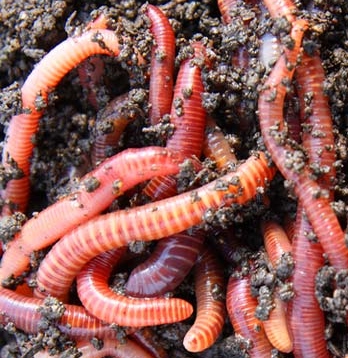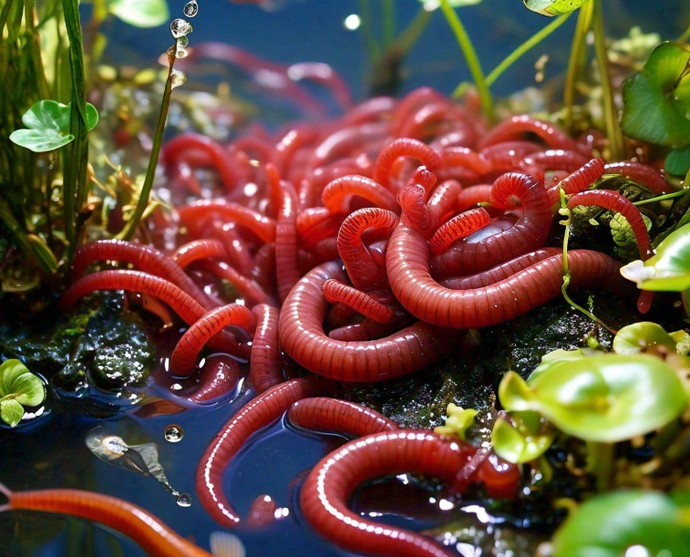Red worms: Tips for raising them
Wiki Article
Whatever You Required to Know About Red Wigglers for Composting
Red wigglers, or Eisenia fetida, play an essential function in the realm of composting, transforming natural waste into beneficial dirt amendments. The process of setting up a worm container and keeping it can present obstacles.What Are Red Wigglers?

(red wiggler earthworms for sale) Belonging To North America, red wigglers are surface-dwelling organisms that choose damp, warm habitats abundant in decomposing natural issue. Their diet consists largely of decomposing plant material, food scraps, and various other organic particles, which they consume and damage down successfully. As they digest this material, they create nutrient-rich spreadings that improve dirt fertility.
Red wigglers are hermaphroditic, having both male and female reproductive organs, and can duplicate swiftly under optimal problems. This ability makes them an optimal option for composting systems, as their populace can boost rapidly. Their durability and adaptability to different atmospheres even more solidify their significance in lasting waste administration methods. Overall, red wigglers are crucial factors to the procedure of reusing natural waste right into important garden compost.
Advantages of Using Red Wigglers
Using red wigglers in composting systems provides numerous advantages that enhance both the performance of waste management and the quality of the resulting compost. These worms, clinically referred to as Eisenia fetida, are especially reliable at breaking down raw material, turning kitchen scraps and lawn waste into nutrient-rich garden compost at an increased rate.One of the main benefits of using red wigglers is their capacity to consume big quantities of natural material, frequently processing their weight in food waste daily. This high usage rate brings about faster decay and lowers the volume of waste sent to garbage dumps. The castings generated by red wigglers are abundant in essential nutrients, helpful bacteria, and enzymes, making them an exceptional fertilizer for yards and plants.
In addition, red wigglers flourish in a selection of environments, making them versatile for both indoor and outdoor composting systems - red wigglers. Their presence in a garden compost bin assists to aerate the product, stopping odors and advertising a healthy and balanced composting procedure. On the whole, employing red wigglers not only adds to efficient waste administration yet also supports sustainable horticulture techniques with the production of high-quality garden compost
(Granite Falls Worm Farms)
Establishing Up Your Worm Bin
To efficiently establish a worm container, it is vital to choose a proper container that meets the requirements of red wigglers while supplying a favorable setting for composting. An ideal container can be made from plastic, wood, or steel, with a capability of at least 1 square foot for each pound of worms.Guarantee the container has ample water drainage holes to avoid excess wetness, as red wigglers Learn More Here prosper in a wet, however not waterlogged, environment. red wigglers. The container must likewise be ventilated to provide adequate airflow, stopping anaerobic conditions that might hurt the worms
A perfect place for the worm bin is a great, dark area, without straight sunlight and severe temperature levels, as red wigglers like a temperature level variety of 55 to 77 levels Fahrenheit.
Prior to presenting the worms, prepare bed linen products such as shredded newspaper, cardboard, or coconut coir, which will certainly give both environment and food. Moisten the bed linen lightly to create a welcoming setting for the worms. Last but not least, take into consideration putting a cover on the bin to keep humidity and lower parasites, while ensuring it can be quickly removed for maintenance.
Feeding and Care Standards
Feeding red wigglers is a critical element of keeping a healthy and balanced composting system. These worms thrive on a diverse diet regimen, primarily composed of natural products such as vegetables and fruit scraps, coffee grounds, and crushed eggshells. It is necessary to stay clear of feeding them meat, dairy products, and oily foods, as these can produce unpleasant odors and bring in pests.When introducing food to your worm bin, cut or shred products right into smaller sized items to promote quicker disintegration. Begin with tiny quantities to gauge the worms' usage price, slowly enhancing the amount as they adjust. It is advisable to alternating feeding locations within the container to motivate extensive mixing and oygenation of the garden compost.

Troubleshooting Common Issues
Keeping a prospering worm composting system can sometimes provide obstacles that require interest and troubleshooting. Common problems consist of an unpleasant smell, which typically suggests overfeeding or the presence of anaerobic conditions. To treat this, decrease the amount of food added and make certain correct oygenation by mixing the bed linen product.One more constant trouble is the retreat of worms from the bin. This can happen due to extreme moisture or unsuitable ecological conditions. Consistently examine the moisture levels, going for a moist but not soggy uniformity, and keep optimum temperatures between 60-80 ° F(15-27 ° C )to produce a comfy habitat for your red wigglers.
Insects, such as fruit flies, can also invade worm containers. red wigglers. To battle this, cover food scraps with a layer of bed linens or shredded paper to hinder flies from laying eggs. Additionally, make certain that any kind of food added is fresh and without mold, which can draw in unwanted parasites
Finally, if your worms appear non-active, examine for stress and anxiety aspects such as temperature level variations or insufficient moisture. Attending to these typical issues will certainly assist preserve a healthy and balanced and productive worm composting system.
Conclusion
In recap, red wigglers, or Eisenia fetida, play a vital duty in sustainable waste administration via vermicomposting. Proper arrangement and maintenance of a worm bin, along with adherence to feeding guidelines, guarantee a growing community that reduces landfill payments.Report this wiki page